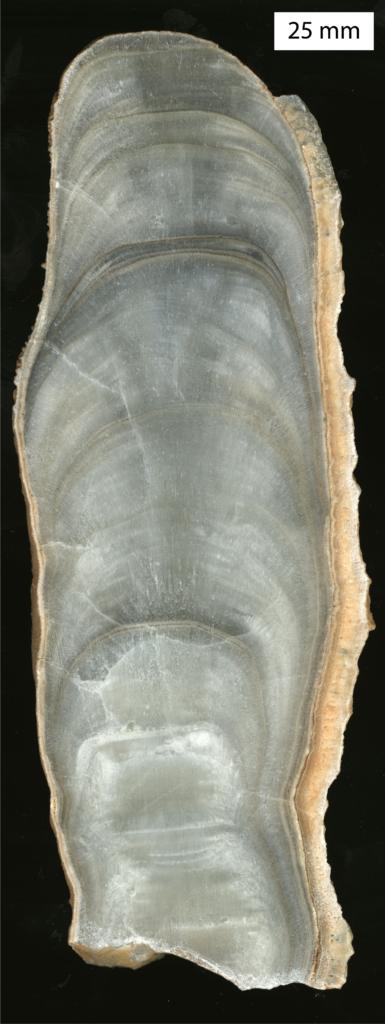The Greenland ice sheet has been melting over the last few decades in response to global warming. This decline not only contributes to global sea level rise, but the ice sheet’s meltwater also weakens the deep-water formation in the North Atlantic with potentially far-reaching effects for Northern Hemisphere climate.

New research published in the journal Nature Geoscience, led by Dr. Jasper Wassenburg, Young Scientist Fellow at the IBS Center for Climate Physics (ICCP) South Korea, and originally conducted at the Max Planck Institute for Chemistry (MPIC), Germany, takes a look back in time at this crucial climatic process. Dr. Wassenburg and his colleagues used stalagmites from Jiangjun Cave in southwestern China, to reconstruct the southern Asian summer monsoon intensity and temperature response to past meltwater pulses in the North Atlantic.
Cave deposits (speleothems) consist of layers of precipitating calcite; with each calcite layer representing a certain time-interval. These calcite layers precipitate from rainwater that transports climate-sensitive elements and isotopes that are subsequently incorporated into speleothems and can be analyzed in the laboratory. These elements (climate proxies) are sometimes challenging to interpret because they can be affected by multiple processes. Dr. Hubert Vonhof, group leader at the MPIC and co-author of the study explains: “we applied newly developed techniques to overcome this challenge by measuring microscopic amounts of water contained within the calcite, and traces of single cellular microorganisms called Archea. This allowed for the first time to separate temperature and rainfall effects on speleothem climate proxies”.
The team studied speleothems that precipitated between 145,000 and 124,000 years ago, a time period characterized by a series of massive ice-sheet melting events which originated from the North American or Eurasian ice-sheets. The study shows that every meltwater pulse is associated with a cooler climate in southwest China and a shortening of the Indian and southern Asian summer monsoon season. However, summer monsoon intensity dramatically decreased only in response to the largest meltwater pulse around 133,000 years ago, at the time of the transition from glacial to interglacial climate. This teleconnection pattern between the North Atlantic and Central Asia can be linked to a southward shift of the atmospheric jetstream in response to high latitude cooling, extending the winter monsoon season in southwest China at the expense of the summer monsoon season.
“Whether the ongoing melting of the Greenland ice sheet will affect rainfall over India and southern Asia will critically depend on the rate of melting and our commitment to reducing greenhouse gas emissions. In our future research we will use a new generation of climate-ice-sheet models to assess the widespread climatic impacts of ice-sheet instabilities”, says Dr. Jasper Wassenburg.
Notes for editors
– References
Jasper A. Wassenburg, Hubert B. Vonhof, Hai Cheng, Alfredo Martínez-García, Pia-Rebecca Ebner, Xianglei Li, Haiwei Zhang, Lijuan Sha, Ye Tian, R. Lawrence Edwards, Jens Fiebig, Gerald H. Haug, Penultimate deglaciation Asian monsoon response to North Atlantic circulation collapse, Nature Geoscience (2021) DOI: 10.1038/s41561-021-00851-9
– Media Contact
For further information or to request media assistance, please contact: U-Jeong Seo, IBS Center for Climate Physics, Pusan National University (+82-51-510-7328, u_jeongs@pusan.ac.kr)
– About the Institute for Basic Science (IBS)
IBS was founded in 2011 by the government of the Republic of Korea with the sole purpose of driving forward the development of basic science in South Korea. IBS has 32 research centers as of July 2021
– About ICCP
The IBS Center for Climate Physics (ICCP) seeks to expand the frontiers of earth system science by conducting cutting-edge research into climate dynamics and utilizing high-performance computer simulations, with the goal of improving decadal Earth system forecasts and long-term projections. See more on http://ibsclimate.org